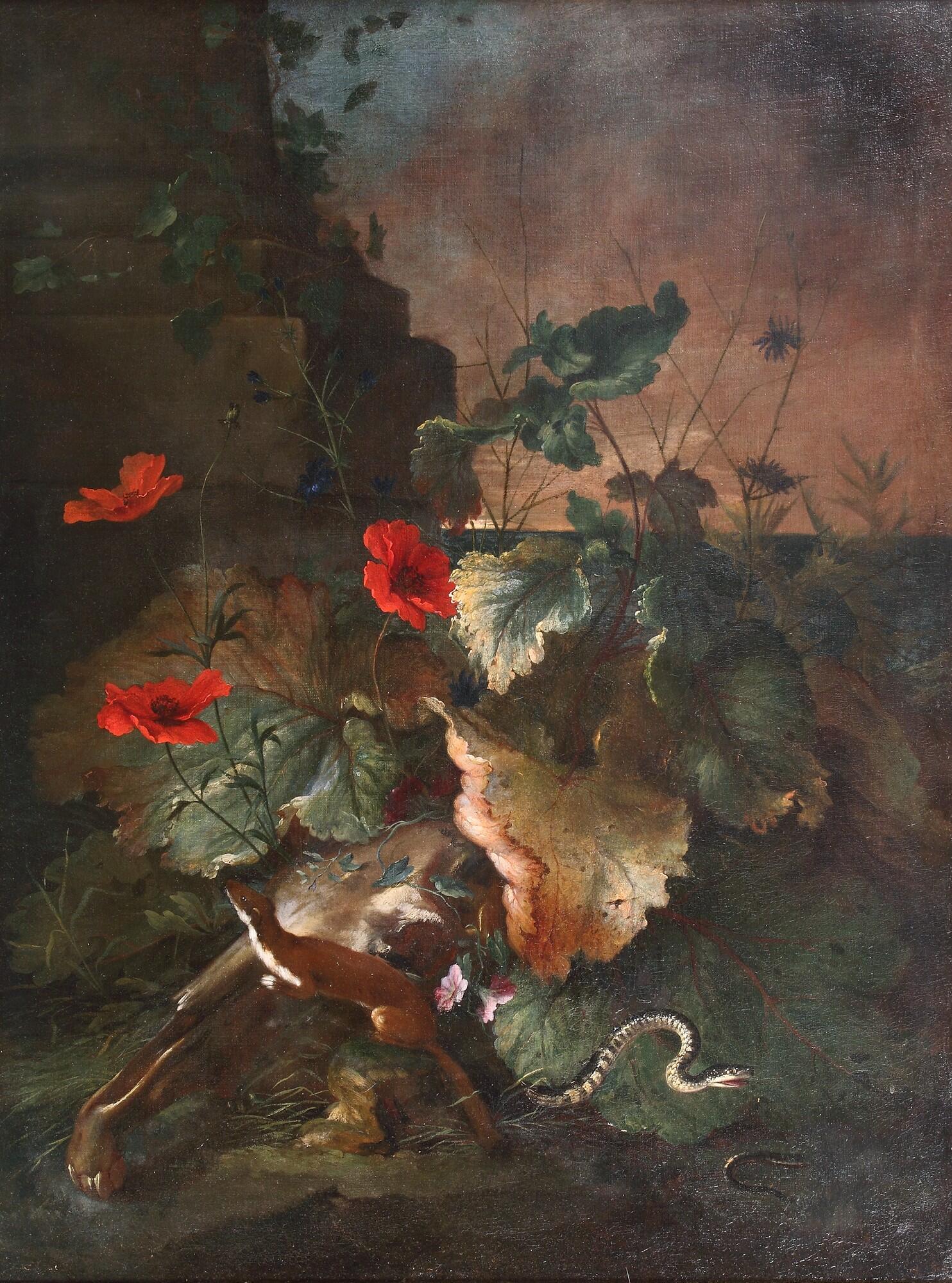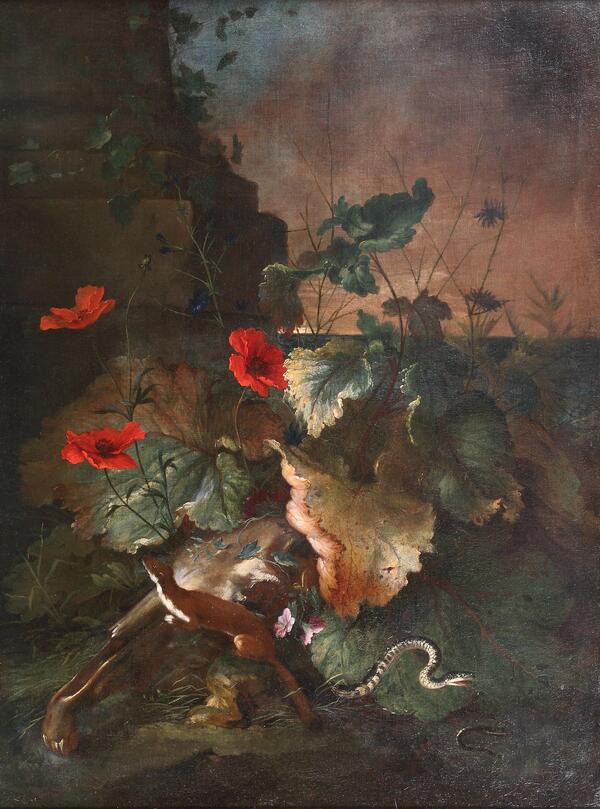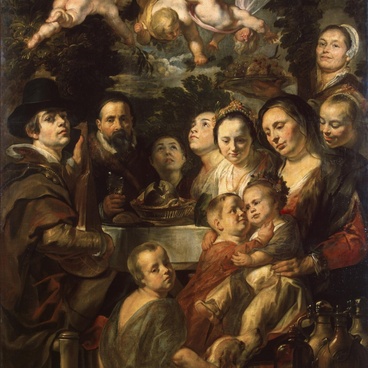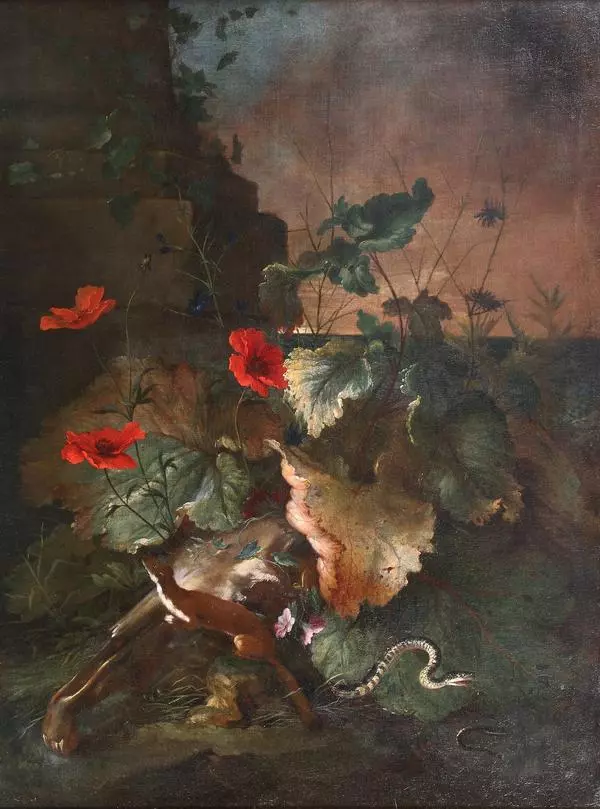Otto Marseus van Schrieck created the Snake and Weasel on the Background of a Landscape with a Ruin painting in the middle of the 17th century. He depicted those elements, which are normally hidden away from human eyes, i.e. soil with little grass, plant stems, small creatures. Still-life paintings with elements of landscape, which showed life hidden behind greenery, were called in Holland sottobosco, i.e. underwood.
Snake and Weasel
Время создания
1660–1670s
Размер
103x78 cm
Техника
oil on canvas
Коллекция
Выставка
1
Открыть в приложении#1
Otto Marseus van Schrieck
Snake and Weasel
#2
#3
As van Schrieck used to root about grass and search out living objects, his contemporaries called him Snuffelaer — from the Dutch word snuffel, which means to rootle.
#4
Writer Arnold Houbraken used to say that the painter
#5
‘was always and everywhere rooting about to search for motley, unusually coloured snakes, lizards, caterpillars, spiders and butterflies, unusual plants and herbs’.
#6
The artist studied these creatures from a scientific point of view, he knew their distinctive features and behavior. He even kept reptiles in a terrarium in his backyard. Art theorist Samuel van Hoogstraten said that when he was together with him in Rome in 1652, he
#7
‘was amazed at the number of monstrous creatures that he kept and fed, as well as that he knew their nature as amazingly as he could portray them with all likelihood’.
#8
Otto Marseus van Schrieck surprised his contemporaries not only by choosing reptiles and insects as pets. He also managed to achieve reliable scientific accuracy in picturing them.
#9
Any snake is hard to picture due to its shimmering skin and distinctive movement. The artist used to achieve literalism: in his paintings snakes look as if they are just about to strike their victims. Also, van Schrieck succeeded in picturing rare species, which nobody had pictured before him. It is known that the artist socialized with natural scientist Jan Swammerdam.
#10
Van Schrieck’s followers were Dutch artists Elias van den Broeck, Rachel Ruysch and Neapolitan painter Paolo Porpora.
#11
There is one more definition relating to the painting with a weasel and a snake from the Yaroslavl Museum of Fine Arts, i.e. vanitas. In translation from Latin it means vanity, conceit. In still-life paintings of the vanitas type, a skull was often used as the centre of the composition: it symbolized transience of life.
#12
In the Dutch still-life paintings of the 17th — 18th centuries, practically every element had a connotation. At that time, people were obsessed with emblems. In different cities of Europe, collections of symbols and their interpretations were published. Anything could serve as a special sign — from flowers to living creatures. The painters knew the meanings of the symbols and incorporated them in their pictures. Dutch still-life paintings were like a certain intellectual game: paintings were full of allegories. Flowers, as a rule, hinted at the same theme of vanitas: they will wither anyway. But there were no absolutely accurate interpretations for symbols. The same flower could have opposite meanings, compositions were interpreted differently.
#13
Yaroslavl Museum of Fine Arts
читать дальшескрыть
00:00
00:00
1x
Snake and Weasel
Время создания
1660–1670s
Размер
103x78 cm
Техника
oil on canvas
Коллекция
Выставка
1
Открыть в приложении
Поделиться



